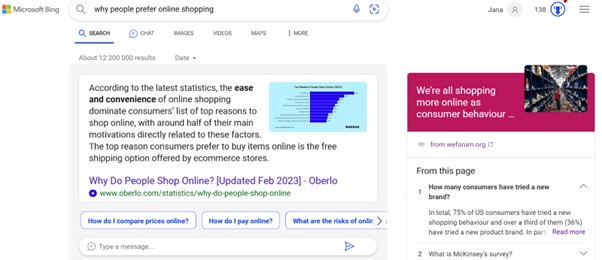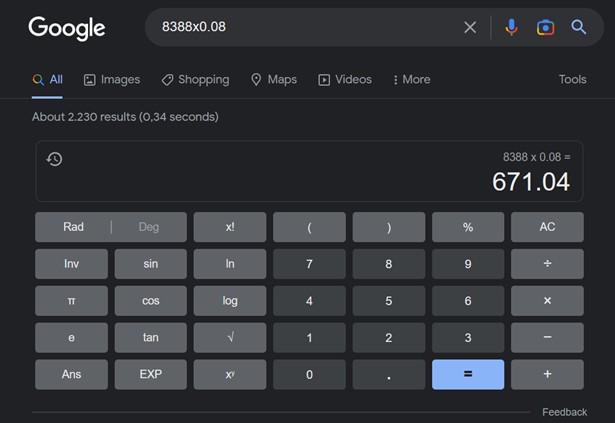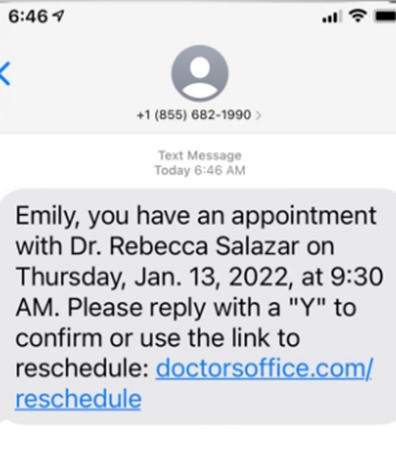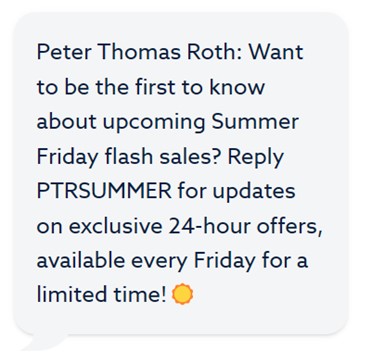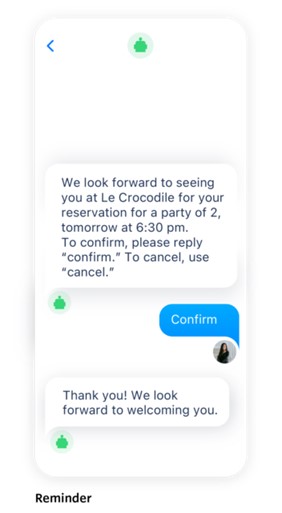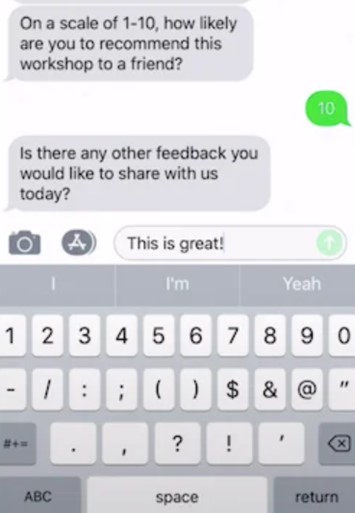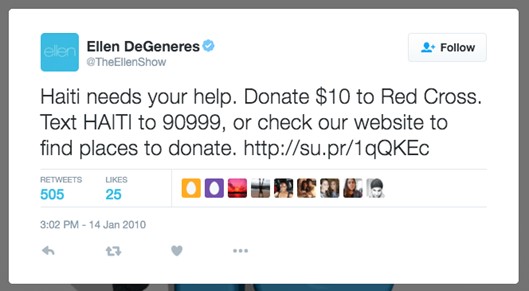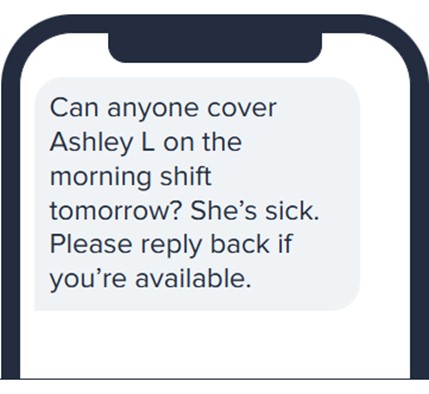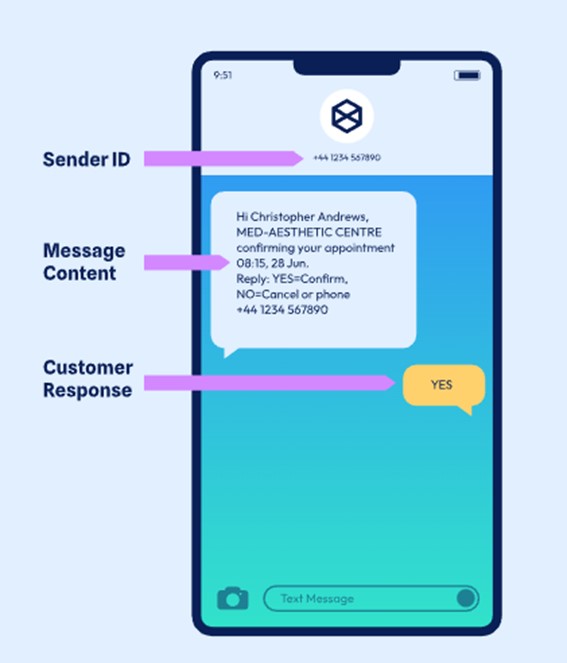Why You Should Use Two Way SMS [Plus How to Get Started]

You text the customer about their package delivery time and location. They respond by saying they won’t be home and they want to switch to a different pickup location.
You instantly change the driving route, saving time and avoiding the hassle that happens when you’re already at their door and no one’s home.
It’s just one of the many scenarios where two-way SMS saves the day.
Sit tight; we’re about to explore the rest.
Two-way SMS is a valuable opportunity for businesses to build a better customer experience because they get to respond in real time just like they do with loved ones every day.
Let’s talk about all the ways this platform can improve your business.
What Is 2-WAY SMS?
A two-way short messaging service (SMS), also stylised 2-WAY SMS, is a communication channel where both sides – the sender and the recipient – get to send messages, allowing customers to interact with companies from their inboxes.
If you’ve sent text messages in your personal life, then you get the idea.
Two-way text messaging runs in contrast to one-way messaging, where recipients don’t get to respond (think: authentication code messages).
Both types of SMS are valuable avenues for companies when considering the SMS open rate of 98%.
Two-way SMS messaging can be more convenient than a phone call for both the business and the customer. It allows for conversational messaging in which both parties are comfortable and operating on their own time.
How Does Two Way SMS Work?
Two-way SMS is usually priced in the form of a setup fee and a monthly fee. To set it up, you have to pick a numeric sender ID out of these options:
| Type | Description |
| Dedicated Short Code |
|
| Shared Short Code (with Keywords) |
|
| Dedicated Long Code or VLN |
|
| Free To End User (FTEU) |
|
The two-way SMS interaction can be initiated from either end. You can start by sending a message and instructing the recipient to respond using a certain letter or keyword.
Alternatively, you can focus on customer engagement to encourage your target audience to initiate contact.
Perhaps you can have them opt in or enter a competition by texting you a keyword. You can promote the campaign on your site, landing pages, other communication channels, or in print, and wait for the responses.
So, does that mean all your messages should be two-way SMS?
Probably not. There are two downsides you should consider:
- Two-way SMS isn’t supported on alphanumeric IDs (the kind where the ID is the brand name
- The cost is higher compared to one-way SMS
There are times when one-way SMS is truly enough, such as when you need to mass-text an announcement to your entire database that doesn’t require their response or action.
But for engaging your audience and driving more revenue, 2-WAY SMS messaging is worth the initial investment.
Why Does Two Way SMS Work?
Customers love convenience.
Have you noticed Google’s and Bing’s increasing focus on featuring relevant information at the top of the result page so you don’t even have to click on a link to find answers anymore?
Why click on a calculator site or app when you can use Google directly?
The reason is convenience.
These days, even having to leave a tab can be enough to discourage readers who are used to having information and offers served to them on a platter – and that’s not a bad thing.
SMS serves them exactly the same way.
In fact, if you ask us, two-way SMS marketing goes a step further because customer texts can be composed right from their mobile phone, and they never have to exit the messaging platform to get what they need.
You can send the first message and bring the conversation to them and simply let them pick and choose their favourite option, offer, or approach right there.
On the business side, this enables you to be there for customers exactly when they need you, guarantees customers will read your messages, and maximises customer satisfaction.
All from their inbox.
The Many Use Cases for Two Way SMS
Here are some situations, where it would be useful for the recipients to respond to SMS text messages, not just read or click through your notifications:
- Scheduling and rescheduling appointments
- Targeted vouchers and special offers
- Order updates and delivery times
- Booking tables or tickets
- Surveys and questionnaires
- Customer support requests
- Donation requests or confirmations
- Employee scheduling and dispatch
Scheduling and Rescheduling Appointments
Clients miss appointments for many reasons like forgetfulness, anxiety, or fear of inadequate insurance coverage or high costs.
Sometimes it’s due to unpredictable circumstances.
Sending appointment reminders reduced no-shows by 14.6% in one study.
Using 2-WAY SMS, your audience can complete the necessary steps of the process over text to speed up the appointment while you can reassure or advise them along the way.
You can also allow them to easily inform you of a situation and reschedule if needed.
Targeted Vouchers and Special Offers
This is another example that could be done over one-way SMS, but two-way does a better job of engaging the audience on the spot and making things more convenient.
They don’t have to leave the message thread to take action. Responding with a keyword is enough legwork on the customer’s end.
You can be creative with your offer and provide multiple customisation options to help you zero in on the most relevant products for your segments by following up with a short survey.
Order Updates and Delivery Times
This can be an automated one-way interaction where you simply let customers know when you’ll be delivering the package. It beats manually calling them or sending an email.
But it could be even more convenient for them to be able to confirm that it works or request a different time or pickup location if they won’t be home in that window.
Communication becomes faster and easier, and you know ahead of time when to reorganise your delivery.
Booking Tables or Tickets
Rather than having a person constantly next to the phone in case somebody calls to cancel, or worse, having no-shows when the table is reserved, you could use 2-way SMS messaging.
Here’s a simple idea of how to check in with customers to ensure you won’t be wasting a table:
Of course, communication gets even more complicated with booking spaces – all the more reason to turn to a two-way SMS service provider.
AirBnB increased the number of successful bookings and improved customer communication this way.
Surveys and Questionnaires
Benefits of SMS surveys are:
- Nearly instant results
- Feedback you can use to further optimise your service, improve your segmentation, or cater to customers
Ask customers a question or series of questions and offer answers they can choose from in their responses.
Salesforce used SMS for a best partner app survey after an event and gathered 19,000 responses from attendees instantly.
Customer Support Requests
Your customer service agents could use any breathing room you can afford them to keep up their performance.
A wall of 2-WAY SMS automated messages can work as a first line of defence, so to speak.
Think of all the FAQs you get and put them in an autoresponder sequence.
After that step, you can also use 2-WAY SMS to text customers instead of jumping on a call for every minor inconvenience.
As long as you leave customers the option to eventually get on the phone with an agent after exhausting the other options, this can save you heaps of call time and improve your service.
Donation Requests or Confirmations
Text-to-give campaigns are a prime example of shortcode SMS.
The message is short, clear, and impactful, and SMS can be sent in a matter of seconds, driving quick results.
You can save the contacts in your database (with permission) and send them donation texts in the future.
It makes it easier on the donors once you establish a good relationship because they don’t have to scour the internet to find and verify a good cause, they can just send a text and donate.
Employee Scheduling and Dispatch
An SMS platform can let you communicate with employees without requiring them to set up yet another app or learn new technology.
Both of these are usual hurdles they face with internal comms.
You could meet staff where they already are by bringing scheduling and other organisational matters to SMS and resolve problems as quickly as they arise.
How to Get Started With 2-WAY SMS in 7 Steps
At least a few of the use cases we just explored apply to your company.
Use these steps as your compass from where you are now to get the best use out of your two-way SMS.
Summary of Steps
The quick version:
| Steps | Key points |
| Find and sign up for a 2-WAY SMS service provider |
|
| Activate phone numbers for texting |
|
| Upload your database and cleanse the numbers before sending |
|
| Speak to your developer and make sure all the APIs are set up correctly |
|
| Build your first 2-WAY SMS campaign |
|
| Send out the first message and wait for replies to come in |
|
| Upgrade your 2-WAY SMS experience with automated text messages |
|
More details below.
1. Find and Sign Up for a Two-Way SMS Service Provider
Think about the type of campaigns you’ll be sending when you’re picking your 2-WAY SMS service provider.
Here are some questions to ask:
- What service type do you offer for “[X] destination”?
- What’s the Setup Fee?
- What’s the Monthly Fee?
- If it uses a shared shortcode, what’s the setup and monthly fee per keyword?
- What’s the Provisioning Time?
- How much notice do I need to give for Termination of Service?
- Do you offer free-to-end-user solutions?
- What’s the customer response throughput?
- Is there a cost for customer responses? If so, what is it?
The answers to these questions help you weed out providers that don’t offer what you need or charge too much.
Mr Messaging lets you consolidate all communication into one service and integrate it with your own system so you can send 2-WAY SMS and read the responses wherever is more convenient for you.
2. Activate Phone Numbers for Texting
You need multiple numbers if you need to access local audiences from various countries.
For example, you need a French number for your customers in France.
Besides international SMS, having more than one number is also useful to separate your campaigns for an easier overview of each one, and to mass-text a large database.
Consult with your provider on the best option for your situation.
3. Upload Your Database and Cleanse the Numbers Before Sending
This should be a mandatory step for any SMS campaign to cut budget waste and actually reach all of your customers.
If you’re looking for specific feedback from them or survey answers, the customers whose numbers are incorrectly formatted won’t be able to give it to you.
Plus, you want correct information – duplicate numbers could give you confusing answers where you don’t realise the same person replied twice or even changed their answer.
Cleanse your database before moving a finger.
4. Speak to Your Developer and Make Sure All the APIs Are Set Up Correctly
An API is a set of instructions and programming standards used to power and integrate tools.
Correctly set up 2-WAY SMS APIs to let you:
- Broadcast large volumes of SMS to customers in their preferred language
- Create automated responses that customers trigger by using certain keywords (but always be clear about what they are!)
- Integrate your SMS channel with a central database in your CRM or an analytics platform to analyse the results of your campaigns
Don’t worry; you don’t have to remember any of this.
You just need to text your developer and remind them to double-check your APIs to ensure everything is connected so you can reach all of your customers without problems and with relevant messages.
5. Build Your First 2-WAY SMS Campaign
Time to plan out how your two-way campaign will go.
Consider the end goal of the text, who’s sending the initial message, potential responses, and the needs of your recipients.
Let’s use appointment reminders or rescheduling for a simple conditional thinking exercise.
The order of business would be as follows:
- Scheduled appointment automatically triggers the creation of a reminder
- The reminder goes off a day in advance with options to confirm, reschedule, or cancel
- Customer responds
- Offer alternative options or link to calendar
- Customer responds
- Confirm a new date and time and automatically schedule the reminder for that
If the customer’s first response is to confirm their attendance or they cancel, the sequence stops.
6. Send Out the First Message and Wait for Replies To Come In
You’re all set to send your two-way campaign into outer space.
Communicate with your customers and win their business and loyalty! We suggest you forget the perfectionistic attitude as soon as possible.
You’ll improve faster along the way than you would have by preparing for ages and never actually sending an SMS.
Track your progress and learn from your mistakes.
And, psst – with two-way messaging, you can always ask your audience for feedback as a good reality check.
7. Upgrade Your 2-WAY SMS Experience With Automated Text Messages
You can add automation into the mix carefully for repeating queries that are easily resolved so you don’t have to manually text, call, or email customers constantly.
These can be triggered by keywords and answered with an autoresponder.
You can offer the customer multiple options like the type you get when you call phone company customer service:
“Press 1 for information about your account, press 2 for your current status…”
All those answers can be automatic.
Regardless, cover all your bases by offering a “speak to an agent” or similar option. Otherwise, customers might feel frustrated that you’re wasting their time texting back and forth and still not solving their problems.
Besides that, all of your initial messages can be automated:
- Appointment reminder with an offer to confirm or reschedule
- Request to fill a form with the option for the recipient to ask any questions
- Delivery status with an offer to confirm or select a different pickup option
- Response to text containing a keyword that starts the conversation
If you set them up well, automated text messages pay off a thousand times over.
Transform Internal and External Comms With Two Way SMS
Customers and employees may not always be at their computers. Their emails tend to be drowning in spam.
But they’re always carrying their phones and reading texts.
With two-way SMS, you’re not just reaching them – they get to respond and interact with you just like they do with other inbox visitors.
Using two-way SMS, you:
- Remove communication barriers with customers and employees
- Get responses, results, and status updates in real-time
- Provide better service and build a long-lasting relationship with customers
So, first things first: Gather numbers for your database.
Then, you can contact us and get all the answers you need about two-way SMS for your business.
